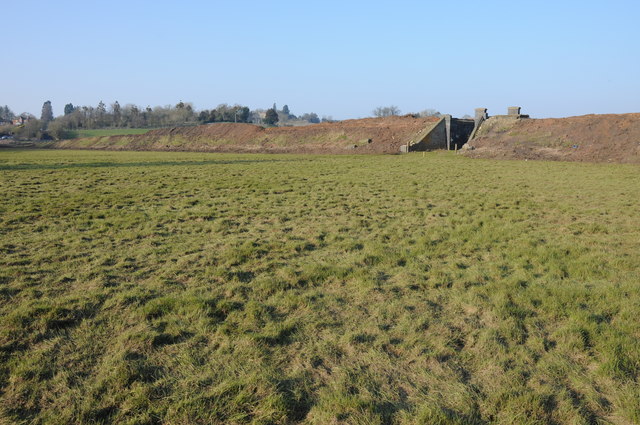Another oddity of the Malvern-Ashchurch branch line was that it itself incorporated another small spur, namely the remnants of the original line that ran through Tewkesbury down to the quayside on the River Avon. The Tewkesbury Quay branch had been built in 1844 as an extension of the original line constructed from Ashchurch to Tewkesbury's first station four years previously. The first station stood on Station Street in the middle of town, as opposed to the second station which stood on Station Lane further north. For a town now without a station, the reminders of Tewkesbury's industrial past are everywhere.
Today, the Quay branch line has been all but completely removed, with the mill buildings on the quay ironically having long outlived the railway that served them. The clearest relic of the line's past can only be seen from the air - looking to the east of Tewkesbury, the tree line gives away the Y-shaped junction at which the Quay branch split away from the Malvern-Ashchurch railway.
The pictures below show the junction of the Quay branch (right) which spurred into Tewkesbury away from the Malvern line (left). Note the numerous sidings as well as the large engine shed, which appears in some of the pictures below.
This shot shows how the scene at the junction looked on the ground, with a signal box covering the access to the sidings complex behind the photographer on the right hand side:
 |
| 'Tewkesbury (shed branch right)' 1st May, 1956. |
Moving further down the Quay branch into Tewkesbury town with this aerial shot, we see the large engine shed which was built on Station Street. The shed was a popular location for photographers and provided some of the most evocative pictures I have seen of Tewkesbury as an industrial town. Note the street-level running section in the final shot from Richard Casserley.
 |
| 'Tewkesbury, 5th May, 1945' |
 |
| 'Tewkesbury Shed' 1st May, 1956. |
 |
| 'Tewkesbury Old Station', February 1953. |
The Quayside Today
Tewkesbury today still retains many of the old waterfront buildings which gave the riverside 'Back of Avon' area its industrial look. Heading down to the river, we pass Abbey Mill and the sluice gate built to form a weir and regulate river depth upstream.
Walking along the western bank of the Avon we carry on up the Severn Way until we cross a bridge back into town. This leads us the Quay Street, the terminus of the eponymous branch line. Several of the old warehouse buildings remain intact on this road, although the railway crossing across the High Street at the top has long since been removed and the path of the railway blocked by a string of shops.
 |
| The Quay branch used to pass directly in front of here. |
Easily the most impressive structure in this area, however, is the old Healing's flour mill which operated from 1865 until 2006. The formidable building sits tall alongside the narrow stream and provides an obvious answer as to why this area of town would need its own railway branch. The bridge shown in front of the mill is the one used to cross back over into town from the Ham.







































































